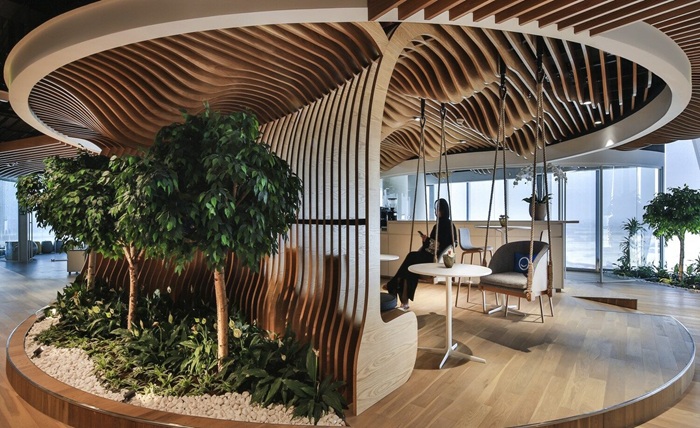Incorporating sustainable design into your office building isn’t just a smart move for the environment—it’s a strategic decision that benefits your business in multiple ways. A sustainably designed office can reduce operational costs, improve employee well-being, and help meet the growing consumer demand for eco-friendly practices. From energy efficiency to thoughtful material choices, sustainable design can transform your workspace into a model of modern efficiency. Whether you’re building from the ground up or making renovations, sustainability should be at the forefront of your planning. Here are three impactful ways to incorporate sustainable design into your office building.
1. Maximize Natural Lighting and Ventilation
One of the most effective ways to create a sustainable office building is by maximizing natural light and ventilation. By designing your space to let in more daylight, you reduce the need for artificial lighting, which can significantly lower energy costs. Skylights, large windows, and open floor plans help distribute sunlight evenly, creating a brighter and more inviting work environment. Natural light not only conserves energy but also boosts employee productivity and well-being by reducing eye strain and improving mood. Incorporating operable windows and passive ventilation systems can also help regulate indoor temperatures without relying heavily on air conditioning.
Ventilation is another key element of sustainable office design. Efficient ventilation systems improve indoor air quality, making the workspace healthier for employees. This reduces the need for energy-intensive HVAC systems. Natural ventilation, where possible, can keep the air fresh and reduce the concentration of pollutants in the office. Additionally, using smart sensors to adjust lighting and temperature based on occupancy and daylight levels can further optimize energy use. These adjustments create a comfortable and sustainable workspace that benefits both the environment and the people who use it.
2. Choose Sustainable Building Materials
The materials used in your office building have a long-lasting impact on the environment, so choosing sustainable options is crucial. Recycled, reclaimed, or responsibly sourced materials reduce the carbon footprint of construction and minimize waste. For example, bamboo flooring, reclaimed wood, and recycled metal are eco-friendly alternatives to traditional building materials. These materials not only have a smaller environmental impact but also provide a modern, stylish aesthetic that enhances the overall design of your office. Using non-toxic paints and finishes also contributes to healthier indoor air quality, which benefits employees and reduces long-term maintenance needs.
In addition to recycled materials, look for products certified by sustainability organizations, ensuring that they meet specific environmental standards. Incorporating locally sourced materials can also reduce transportation emissions, further decreasing the environmental impact of your office building. Working with firms like ESG Consulting can help you identify the most sustainable options for your specific project. Their expertise ensures that your building materials align with broader environmental, social, and governance goals, making your office both sustainable and socially responsible.
3. Implement Energy-Efficient Systems
Energy efficiency is a cornerstone of sustainable office design, and upgrading to energy-efficient systems can significantly reduce your building’s overall carbon footprint. Start by installing energy-efficient lighting, such as LED bulbs, which use far less electricity than traditional lighting options. Motion sensors and automatic timers can further reduce energy waste by ensuring that lights are only in use when necessary. Solar panels are another excellent investment for reducing reliance on non-renewable energy sources. Over time, these systems pay for themselves through reduced utility costs, making them a smart financial choice as well.
Energy-efficient HVAC systems are equally important in reducing the environmental impact of your office building. Modern systems that use advanced technology to regulate temperature more effectively not only save energy but also create a more comfortable environment for employees. Investing in high-performance insulation can also keep heating and cooling costs down by maintaining a consistent indoor temperature. When combined, these energy-efficient measures drastically reduce energy consumption, lower operating costs, and contribute to a more sustainable future.
Conclusion
Incorporating sustainable design into your office building is not only beneficial for the environment but also for your bottom line. Maximizing natural lighting, choosing sustainable materials, and implementing energy-efficient systems create a workspace that promotes employee well-being while reducing operational costs. Sustainable office design reflects your commitment to responsible practices, making a positive impact on both your business and the planet. With the right strategies, your office can be a model for environmental responsibility and long-term success. Taking these steps today ensures a greener, more efficient future for your company.







